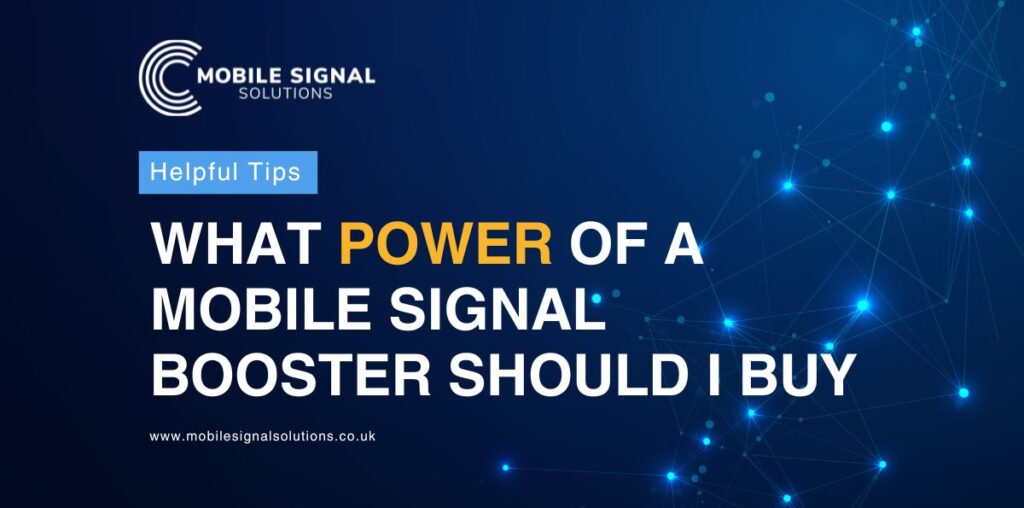
Choosing the right repeater is all about getting the end signal. This can easily be calculated by taking the outside signal + the gain from the aerial being used at the outside location and adding them together and taking into account the loss along the cables. This outdoor aerial should be placed where the signal is best and pointed towards the local cell tower’s general direction, this will give you the input signal that you will start with.

The signal is then transmitted from the aerial to the amplifier, this journey incurs some loss at 2 points. The first loss will happen where the aerial is connected to the cable using an nType connector, the loss will be -3db for each connector, which reduces the signal starting to enter the copper core of the cable.
The second loss occurs once the signal starts to travel down the cable, the loss across the cable will vary depending on the cable type. Below we will outline the different cables and the loss that can be attributed to the cable, additionally you can calculate cable attenuation through the times microwave calculator. It’s very important to use high quality cable in any commercial mobile signal booster installations, to prevent as much loss as possible.
- LMR100 or RG174: Most self-install signal boosters will come with this cable, ready to use.
- Times Microwave LMR400: Commercial installers use this type of cable when signal is above average or over short to medium distances.
- Times Microwave LMR 600: This cable is used when signal is at a premium or where signal must travel over long distances.
| 800MHz | 10 Meters or 30 Feet | 33 Meters or 100 Feet | 100m+ |
| LMR100 | 7.1dB | 23.7dB | 71.2dB |
| LMR400 | 1.22dB | 41.6dB | 12.2dB |
| LMR600 | .78dB | 2.6dB | 7.8dB |
| 1800MHz | 10 Meters or 30 Feet | 33 Meters or 100 Feet | 100m+ |
| LMR100 | 11.0dB | 36.7dB | 110.1dB |
| LMR400 | 1.87dB | 6.23dB | 18.7dB |
| LMR600 | 1.22dB | 4.07dB | 12.2dB |
| 2100MHz | 10 Meters or 30 Feet | 33 Meters or 100 Feet | 100m+ |
| LMR100 | 11.9dB | 39.8dB | 119.8dB |
| LMR400 | 2.04dB | 6.8dB | 20.4dB |
| LMR600 | 0.78dB | 2.6dB | 7.8dB |
For the majority of installations, the distance from the outer aerial to the amplifier, will either be 10m for a small self-install, or 30-50m for a commercial installation. This distance will determine the loss you experience, you must always keep the distance to a minimum when dealing with a poor outside signal.
Once connected to the amplifier the signal will be further reduced by the loss at the connection, where another 3dB will be lost before being inputted into the amplifier. Here the amplifier will work to improve the signal and the signal will then be boosted depending on the power levels of the chosen amplifier.
- A 17dB power amplifier has a 100dB maximum gain
- A 10dB power amplifier has a 60dB maximum gain
What Else to be Aware of When Using a Self Install Booster
The most power allowed to be broadcast legally in the UK is a 100dB gain, as of 2024 and is unlikely to be changed in the near future. This is in order to protect the network’s infrastructure. You should ensure that the signal that enters your amplifier is as strong as possible by using the best cable, and ensure the highest gain outdoor antenna is used to meet your needs.
For help with commercial installations contact the Mobile Signal Solutions UK team of engineers for assistance any time on [email protected]

